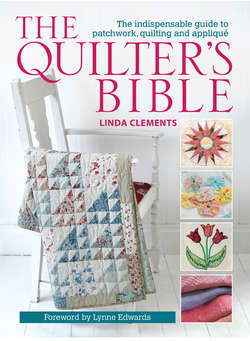Читать книгу The Quilter's Bible - Linda - Страница 61
На сайте Литреса книга снята с продажи.
ОглавлениеCommon Quilt Settings
There are so many books, magazines and online articles on quilt settings that many books could be devoted to the subject (see Further Reading for suggestions). Examples of the most usual layouts are given in this section to give you a taste of what you might try. Of course, diagrams with plain colours can only hint at the effects that can be achieved and this subject comes to life once gorgeous fabrics are used.
Straight Setting
Straight quilt settings, that is arranging the blocks vertically or horizontally, are the most popular way to arrange a quilt. Straight settings, sometimes called edge to edge, may repeat the same block throughout the design of the quilt or feature different blocks. The blocks can be presented in the same way or rotated one way or the other, and often combined to create secondary patterns. The blocks can be joined to one another or be separated by ‘frames’ or sashing.
On Point Setting
Rather than arranging quilt units or blocks straight, they can be turned 45 degrees, which is called ‘on point’. This type of layout can either be extended to the edge or border of the quilt with half blocks at the edges, as shown in the first diagram, or corner triangles and setting triangles can be added to make the overall shape into a square or rectangle, as shown in the second diagram.
Alternating Setting
These quilt settings alternate a main block with another block, often a plain or simpler block, as shown in the first diagram. This means less piecing work and allows the main block to be shown off. If plain blocks are used this allows greater scope for quilting. Four-patch and nine-patch blocks are often alternated with plain blocks in this way. Quilt layouts can be in four quadrants, each rotated 90 degrees, as shown in the second diagram.
Tessellating Setting
Quilt settings with tessellating patterns are those that repeat a particular unit or pattern all over the quilt to make designs that interlock and create areas of positive and negative space. Tessellating patterns are visually stimulating and appear never-ending. They often use a single shape, such as a diamond, or a block, such as the Friendship Star block and the T block shown here. Tumbling Blocks and Inner City are two other blocks often used.
Medallion Setting
A medallion setting is one where a central square, rectangle or circle forms the focal point of the quilt, with patchwork ‘frames’ or borders building out from this centre point. Printed panels, such as the Kona Bay one shown in the second diagram, can make very attractive focal points of a medallion-style quilt. See also the Medallion Quilt picture.
Tilted Setting
Many blocks can be tilted quite easily by adding pieced sections to each side, with the block then re-cut so the central pattern is at an angle. Square-within-a-Square (first diagram) and Log Cabin (second diagram) are blocks that look good in this type of arrangement. Tilted settings create great movement within a quilt. See Making a Tilted Block for creating a tilted block.
Sashed Setting
The way that the blocks within a quilt are arranged can be enhanced by the use of sashing. Sashing, sometimes called lattice, is used to frame and separate blocks and can make a big difference to the look of a finished quilt. Sashing can be plain or pieced and can also have the addition of keystones and cornerstones (see second diagram). See Using Sashing for more details on sashing and keystones.
